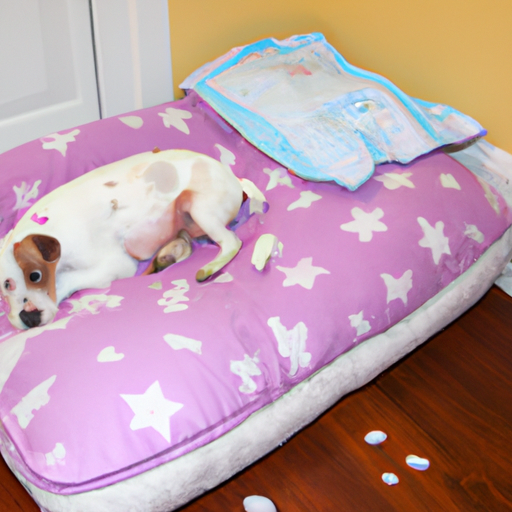It’s a common sight – your beloved canine companion, snoozing peacefully after a day of play. But what happens when you notice a wet spot beneath them? Before panic sets in, you should know that urinary incontinence, while concerning, is a condition that can often be managed with the right knowledge and care.
Table of Contents
1. Understanding Urinary Incontinence in Dogs
2. Causes of Incontinence in Dogs
3. Diagnosing Incontinence in Dogs
4. Treatment Options for Incontinence in Dogs
5. Frequently Asked Questions
Key Takeaways
– Incontinence in dogs can often be a symptom of underlying health issues.
– Various factors, including age, breed, and medical conditions, can contribute to incontinence.
– Diagnosis typically involves comprehensive veterinary examinations and tests.
– Treatment options can range from medication to surgery, depending on the cause.
– Proper care and management can help keep your dog comfortable and healthy.
Understanding Urinary Incontinence in Dogs
Urinary incontinence is a condition where a dog involuntarily leaks urine. This can happen while they’re resting, sleeping, or in some cases, during normal activities. It’s a condition that affects many dogs, especially as they age. It’s important to remember that this is not a behavioral issue or a training problem – it’s a medical condition that needs attention and care.
One of the best resources for understanding this condition is the American Kennel Club, which provides valuable insights into various canine health issues.
Causes of Incontinence in Dogs
Several factors can contribute to incontinence in dogs. These can range from physiological factors such as age and breed, to underlying medical conditions. Here are some common causes:
- Aging: As dogs age, their bladder control can weaken, leading to incontinence.
- Spaying/Neutering: Some dogs may develop incontinence after being spayed or neutered.
- Medical Conditions: Conditions like urinary tract infections, bladder stones, or diabetes can cause incontinence.
- Congenital Abnormalities: Some dogs may be born with abnormalities in their urinary tract that cause incontinence.
You can find more in-depth information about these causes in this OneTopDog article.
Diagnosing Incontinence in Dogs
Diagnosing incontinence typically involves a comprehensive examination by a veterinarian. They might perform blood tests, urinalysis, ultrasound, or other diagnostic tests to identify the cause. It’s crucial to get a correct diagnosis to ensure the proper treatment.
You can find more about the process of diagnosing incontinence on this OneTopDog page.
Treatment Options for Incontinence in Dogs
Treatment for incontinence varies depending on the cause. Here are some common treatment options:
- Medication: Drugs like Phenylpropanolamine or hormone therapy can strengthen bladder control.
- Dietary Changes: A special diet may help manage incontinence, especially if it’s caused by a condition like diabetes.
- Surgery: In severe cases or if the incontinence is caused by an abnormality, surgery may be an option.
- Absorbent Pads: To manage the symptoms, some owners use absorbent pads to keep their dogs and homes clean.
For more detailed information on treatment options, refer to this OneTopDog article.
Frequently Asked Questions
-
Is incontinence in dogs a sign of aging?
Yes, older dogs are more prone to incontinence due to weakening muscles. However, incontinence can also be a symptom of other health issues. -
What breeds are most at risk for incontinence?
While any breed can be affected, larger breeds and spayed females are more commonly affected. -
Can diet affect a dog’s incontinence?
Yes, a diet high in quality proteins and fiber can promote urinary health. -
How can I keep my home clean if my dog has incontinence?
Absorbent pads and doggy diapers can be a great help. Regular cleaning is also important.
Being a caregiver for an incontinent dog can be a challenge, but with proper knowledge, patience, and care, it’s a condition that can be managed. Remember, your furry friend relies on you for their comfort and health. A trip to the vet and the right care can help them live a comfortable, happy life.



